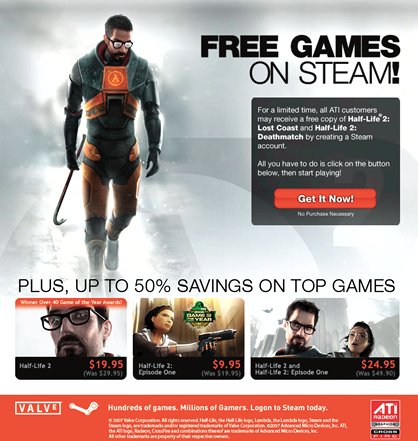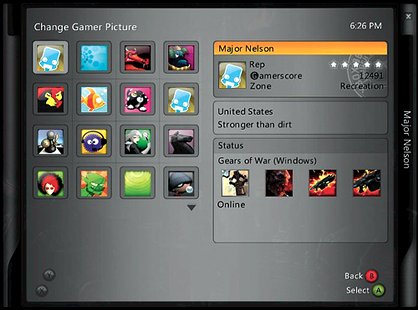Dead or alive
Is Games for Windows LIVE dead in the water?
Games for Windows LIVE, in case you didn’t know, is Microsoft’s online gaming service, a single multiplayer platform across which all of their games may eventually run. Israeli tech news website NGOHQ.com is one of the service’s most notable doubters, having set up a petition to boycott the thing outright. LIVE caters to only 26 countries – and Israel isn’t one of them. “The entire idea for this boycott is to create awareness,” says Eran Badit a member of NGOHQ’s site staff. “Microsoft wants to make LIVE into a global standard and collect additional fees for nothing. That’s not OK, but somehow tolerable. The fact that this service is only available to 26 countries is unacceptable.” Badit’s thoughts are echoed across the web. Since launching its first GFWL-enabled title, Halo 2, in May 2007, the service has received more criticism than a pube-filled Mars Bar. “It’s unfriendly, bloated and amateurish,” says Badit. “The world’s top software developer should have something much better.”
The aspect of LIVE that garners most raised eyebrows is its tiered payment system – the basic service is free, but LIVE’s Gold service (which includes multiplayer achievements, matchmaking and the ability to hop into a game with your Xbox 360 brethren) will cost you 10 bucks a month, or 50 bucks a year. MMOs like World of Warcraft have been passing the collection box for years, but the traditional online FPS has long been maintained by clans and privately owned servers, not megacorps. PC gamers are used to getting their online kicks for free, so for Microsoft to start asking players to pony up cash was always going to cause controversy.

Above: Steam has its own detractors, but is mostly considered a solid service
But before forming a lynch mob, bear in mind that LIVE isn’t all about breaking the bank. “We weren’t as clear as we should have been that Games for Windows LIVE on the PC is free,” the service’s Senior Director Kevin Unangst told Eurogamer.net. Indeed, on the Silver service, you can play online for free – minus cross-platform play, multiplayer achievements or matchmaking. While Microsoft insist that their service is not an attempt to port Xbox LIVE to the PC (the two systems are separate), your Windows gamertag, the ability to keep track of the status of your friends and hoard achievements – not to mention the chunky interface – has 360 written all over it. Do desktop junkies really want to play games against couch potatoes? A lack of enthusiasm surrounding cross-platform matches in RTS Universe at War: Earth Assault suggests not. There’s also no external interface and the service is only accessible through the in-game menus of the seven games it currently supports. Want friend invites when you’re playing a game that doesn’t support LIVE? Not gonna happen. Adding salt to the wound are connection problems, awkward updates and matchmaking queues like it’s the January sales.
Anti-LIVE activists, meanwhile, have also got themselves tied up in knots over exclusivity. Microsoft insist that LIVE titles like Halo 2 and Shadowrun require Windows Vista to run, but Razor 1911 (one of the oldest software pirate groups on the net) proved them wrong when they created a crack that lets the game install in XP without DirectX 10. Microsoft isn’t helped by the fact that, comparatively, Valve’s Steam servicehas become a public darling. “LIVE is not in the same league as Steam or Xfire,” says Badit. “With Steam, you don’t pay anything, except for the games. You can use it internationally. And of course, Steam and Xfire are far more stable.”
Over time, Steam has won hearts and minds. The service has matchmaking and voice chat, like LIVE, but it also pops a friends list into your system tray, informing you of invites and events. It automatically patches your games, lets you organise clans and offers a dedicated service client. The recent Steamworks package allows developers to retrofit their games with Steam functionality and even add LIVE-esque achievements online and offline. In comparison, LIVE must be hard-coded into every game that uses it. But remember, Steam suffered Heather Mills levels of hate when it appeared in 2002 and is still accused of crimes against gaming. LIVE is still in its infancy, albeit with only a handful of games on its roster (including Viva Pinata, Kane & Lynch and Universe at War), compared to Steam’s 250+, they’ll need to get a move on before expecting people to start shelling out.

Above: The console-ish interface of Xbox LIVE likely doesn't sit well with seasoned PC gamers
Sign up to the GamesRadar+ Newsletter
Weekly digests, tales from the communities you love, and more
For their part, Microsoft hope to improve LIVE and a fresh push for the Games for Windows brand is thought to be imminent. Kevin Unangst claims they’re planning an online store, similar to the Xbox LIVE Marketplace. Even anti-LIVE activists are quick to suggest ways in which LIVE might live up to expectations. “What I want most from online gaming services is a completely hassle-free purchase model for games,” says Yemir, a staff member of game site Futuremark.com. “Just log in, browse and search the game list, and click on ‘play’.” And a streamlined online system can only lead to better games, reckons Josiah Pisciotta, of indie developer Chronic Logic. “Services like Windows LIVE and Steam are especially attractive,” he says. “Their users are a more serious group of gamers than you find on a lot of portal sites, creating a much better market.”
In all honesty, a small-scale boycott of the software giant’s wares is unlikely to stop Microsoft in their tracks. You would hope, though, that somewhere in deepest Seattle battle-plans are being redrawn. Your move Mr. Gates. Better make it a good one.
Jul 15, 2008


